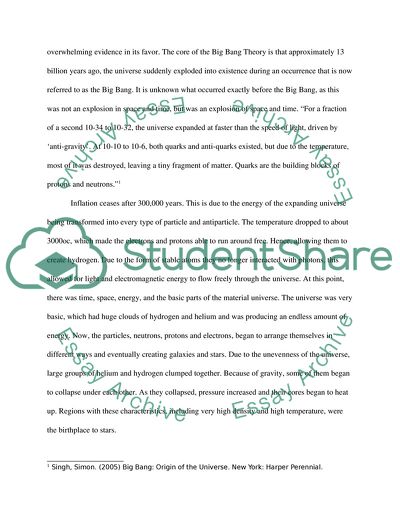Cite this document
(Current Age of the Universe According to the Big Bang Theory Case Study, n.d.)
Current Age of the Universe According to the Big Bang Theory Case Study. Retrieved from https://studentshare.org/science/1741841-discuss-what-is-the-current-age-of-the-universe-according-to-the-big-bang-theory-how-is-the-age-of-the-universe-measured-discuss-recent-findings-in-relation-to-the-age-of-the-universe-and-the-possible-impact-of-future-telescopes
Current Age of the Universe According to the Big Bang Theory Case Study. Retrieved from https://studentshare.org/science/1741841-discuss-what-is-the-current-age-of-the-universe-according-to-the-big-bang-theory-how-is-the-age-of-the-universe-measured-discuss-recent-findings-in-relation-to-the-age-of-the-universe-and-the-possible-impact-of-future-telescopes
(Current Age of the Universe According to the Big Bang Theory Case Study)
Current Age of the Universe According to the Big Bang Theory Case Study. https://studentshare.org/science/1741841-discuss-what-is-the-current-age-of-the-universe-according-to-the-big-bang-theory-how-is-the-age-of-the-universe-measured-discuss-recent-findings-in-relation-to-the-age-of-the-universe-and-the-possible-impact-of-future-telescopes.
Current Age of the Universe According to the Big Bang Theory Case Study. https://studentshare.org/science/1741841-discuss-what-is-the-current-age-of-the-universe-according-to-the-big-bang-theory-how-is-the-age-of-the-universe-measured-discuss-recent-findings-in-relation-to-the-age-of-the-universe-and-the-possible-impact-of-future-telescopes.
“Current Age of the Universe According to the Big Bang Theory Case Study”. https://studentshare.org/science/1741841-discuss-what-is-the-current-age-of-the-universe-according-to-the-big-bang-theory-how-is-the-age-of-the-universe-measured-discuss-recent-findings-in-relation-to-the-age-of-the-universe-and-the-possible-impact-of-future-telescopes.


